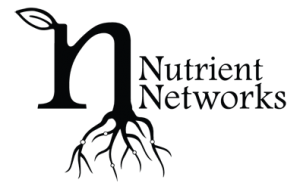How is Ecological Sanitation different?
Ecological Sanitation is an umbrella term to capture a variety of practices for managing organic material, water, and other resources in a manner that sustains their value, protects public health, and avoids negative impacts to social and environmental systems. Rather than disposing of food scraps or human feces + urine, Ecological Sanitation allows for the collection, processing, and beneficial use of these resources in a closed cycle.
How does it work?
Ecosan methods include composting toilets, food scrap composting, greywater treatment/reuse, and rain harvesting, among others. These help minimize health risks, eliminate pollution, and support healthy landscapes and food systems. When implemented together, these efforts work to close the loop and foster long term, low cost, regenerative systems.
Eco-Toilets
Eco-toilets, or composting toilets, are used to collect poop and pee (humanure), using little or no water, and provides conditions for their natural decomposition into humus. Composting toilets vary in design and process, but all share the purpose of converting humanure into a safe and stable compost, or humus that can be returned to the soil rather than discharged into the environment as polluted water.
Food Scrap Composting
Food scrap composting can work at many levels and using a variety of methods. A simple backyard compost bin can have an enormous impact if enough of us do it. Community compost hubs can provide a local, decentralized options for composting, especially in densely populated and urban neighborhoods. Medium to large scale composting sites can provide a large capacity to recycle food scraps and yard debris regionally. These facilities provide an outlet for large generators like supermarkets, restaurants, institutions, and food processors. No matter what scale, all composting follows the same basic science of combining a mixture of carbon and nitrogen rich material, or greens and browns, in a way that facilitates aerobic composting conditions.
Greywater Management
Greywater is used water from sources other than toilets and urinals. Common greywater sources include sinks, showers, washing machines, and dishwashers. Because it does not include feces and urine, and often reduces the total amount of water requiring management, greywater systems are an effective way to recycle water back into the local landscape, recharge local groundwater, and reduce the use of drinking water for irrigation. Types of greywater systems include sand filters, constructed wetlands, contained media filters, mulch basins, and branched drain systems.
rain harvesting
Rain harvesting systems capture rainwater runoff from roof surfaces so that it can be utilized to offset well water, municipal drinking water, or other sources. Rainwater can be directly used for irrigation, washing, and other non-potable uses. With the addition of a filter (mechanical, sand, UV, or RO), rainwater can meet drinking water standards.
WHY IS OUR CURRENT SYSTEM FAILING US?
When most of us flush a toilet or throw an apple core into the garbage, we don’t give much thought to why or where it goes. Our waste management systems are designed to quickly and easily make these materials “go away”. Conventional waste systems were designed around the idea that the apple core and your toilet contributions are problem materials with no value and require disposal.
Both food scraps and humanure are organic materials rich in nutrients needed to sustain healthy soil and to grow healthy plants, including those we eat. When we dispose of these materials, we fail to return them to the system out of which they came. Landfills and wastewater systems make the organic material unavailable for practical recycling, and so we degrade our soils and rely on chemicals and synthetic fertilizers to make up for it. These outdated systems have other drawbacks, including the release of greenhouse gases, discharge of excess nutrients to land and water bodies, and the unnecessary use of clean water.
Nearly all food residuals (95%) are disposed of in landfills or incinerators. Food scraps are made up of mostly water, but also valuable nutrients. When composted, they become valuable humus that can be used to build healthy soil. Humanure is typically managed through flush toilets and wastewater systems that use clean water to discard the material through expensive treatment infrastructure. On average each of us use about three thousand gallons of clean water per year to flush away 150 gallons of humanure.
Even though many of us now understand the high financial and environmental cost of wastewater and solid waste systems, flush toilets and landfills prevail. Reasons for maintaining the status quo include the capital investment needed to implement a better system, existing infrastructure, established waste handling industries, and the change in behavior needed to make eco-san successful.








